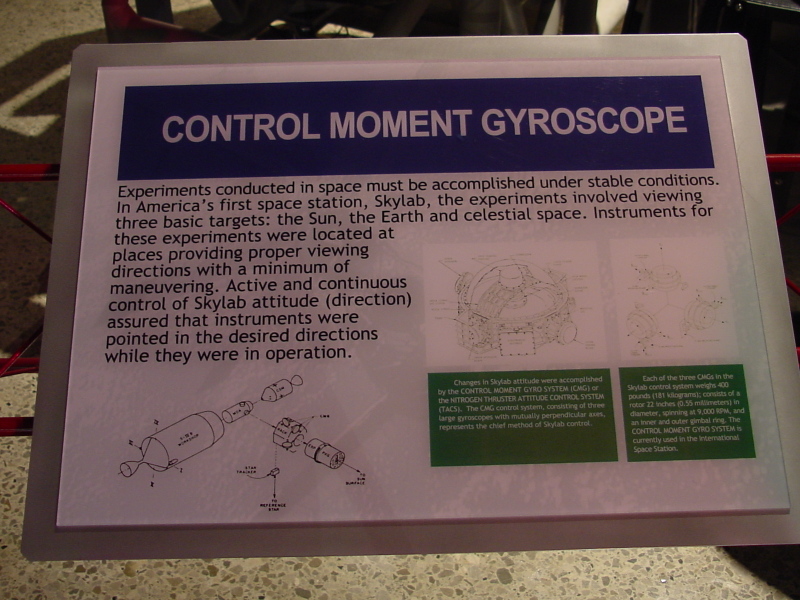| Prev |
heroicrelics.org U.S. Space & Rocket Center Site Index Skylab Artifacts Gallery |
Next |
dsc03448.jpg
The sign which accompanies the Skylab control moment gyro. It reads
Control Moment Gyroscope
Experiments conducted in space must be accomplished under stable conditions. In America's first space station, Skylab, the experiments involved viewing three basic targets: the Sun, the Earth, and celestial space. Instruments for these experiments were located at places providing proper viewing directions with a minimum of maneuvering. Active and continuous control of Skylab attitude (direction) assured that instruments were pointed in the desired directions while they were in operation.Changes in Skylab attitude were accomplished by the control moment gyro system (CMG) or the nitrogen thruster attitude control system (TACS). The CMG control system, consisting of three large gyroscopes with mutually perpendicular axes, represents the chief method of Skylab control
Each of the three CMGs in the Skylab control system weighs 400 pounds (181 kilograms); consists of a rotor 22 inches (0.55 meters) in diameter, spinning at 9,000 RPM; and an inner and outer gimbal ring. The control moment gyro system is currently used in the International Space Station.

| Time picture taken | Fri Jun 20 14:44:07 2003 |
| Location picture taken |
Space Hall "Old" Museum U.S. Space & Rocket Center Huntsville, AL |
| Prev |
heroicrelics.org U.S. Space & Rocket Center Site Index Skylab Artifacts Gallery |
Next |